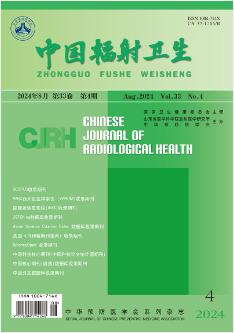A review of transfer distribution and content of radionuclides in mushrooms
引用次数: 0
Abstract
Since the Chernobyl nuclear accident, the radioactive contamination in food caused by the nuclear accident has been widely concerned by people. There have been a lot of studies on concentrated radionuclides in mushrooms in foreign countries, but the research on radionuclides content and transfer distribution mechanism of radionuclides in mushrooms is almost blank in China. Studies have shown that mushrooms have a strong adsorption capacity on radionuclides. As a common food in daily life, therefore, it is of great significance to study the content of radionuclides in mushrooms for evaluating the internal dose in the human body. In this paper, the types of radionuclides in mushrooms and the methods of their transfer and distribution in mushrooms were reviewed, and the research status and development trends at domestic and abroad in recent years were emphasized, in order to provide theoretical support for the future basic research. 摘要: 切尔诺贝利核事故后, 由核事故导致的食品中放射性污染受到广泛关注。国外对蘑菇浓集放射性核素已有大 量研宄, 而我国目前关于蘑菇中放射性核素含量及转移分布机理的研宄几乎处于空白。蘑菇作为人们日常消费的食 品, 研宄表明其对放射性核素具有较强的吸附作用, 因此开展蘑菇中的放射性核素含量研宄对评估人体内照射剂量具 有重要意义。本文综述了蘑菇中放射性核素的种类、蘑菇中放射性核素的转移分布研宄方法, 并重点阐述了近年来国 内外研宄现状, 旨在为今后的基础研宄提供理论支撑。蘑菇中放射性核素的转移、分布及含量研究进展
Since the Chernobyl nuclear accident, the radioactive contamination in food caused by the nuclear accident has been widely suspected by people There have been a lot of studies on centralized radio credits in rooms in foreign countries, but the research on radio credits content and transfer distribution mechanism of radio credits in rooms is also most blank in China Studies have shown that Mushrooms have a strong advertising capacity on radios As a common food in daily life, there are, it is of great significance to study the content of radiologies in classrooms for evaluating the internal doses in the human body In this paper, the types of radiologies in rooms and the methods of their transfer and distribution in rooms were reviewed, and the research status and development trends at domestic and abroad in recent years were emphasized, in order to provide theoretical support for the future basic research Abstract: After the Chernobyl nuclear accident, radioactive contamination in food caused by the accident has received widespread attention. There has been extensive research on the concentration of radioactive nuclides in mushrooms abroad, while research on the content and transfer distribution mechanism of radioactive nuclides in mushrooms in China is currently almost blank. As a daily food consumed by people, research has shown that mushrooms have a strong adsorption effect on radioactive nuclides. Therefore, conducting research on the content of radioactive nuclides in mushrooms is of great significance for evaluating the internal radiation dose of the human body. This article reviews the types of radioactive nuclides in mushrooms, the research methods for the transfer and distribution of radioactive nuclides in mushrooms, and focuses on the current research status at home and abroad in recent years, aiming to provide theoretical support for future basic research.
本文章由计算机程序翻译,如有差异,请以英文原文为准。
求助全文
约1分钟内获得全文
求助全文
来源期刊
CiteScore
0.80
自引率
0.00%
发文量
7142
期刊介绍:
Chinese Journal of Radiological Health is one of the Source Journals for Chinese Scientific and Technical Papers and Citations and belongs to the series published by Chinese Preventive Medicine Association (CPMA). It is a national academic journal supervised by National Health Commission of the People’s Republic of China and co-sponsored by Institute of Radiation Medicine, Shandong Academy of Medical Sciences and CPMA, and is a professional academic journal publishing research findings and management experience in the field of radiological health, issued to the public in China and abroad. Under the guidance of the Communist Party of China and the national press and publication policies, the Journal actively publicizes the guidelines and policies of the Party and the state on health work, promotes the implementation of relevant laws, regulations and standards, and timely reports new achievements, new information, new methods and new products in the specialty, with the aim of organizing and promoting the academic communication of radiological health in China and improving the academic level of the specialty, and for the purpose of protecting the health of radiation workers and the public while promoting the extensive use of radioisotopes and radiation devices in the national economy. The main columns include Original Articles, Expert Comments, Experience Exchange, Standards and Guidelines, and Review Articles.

 求助内容:
求助内容: 应助结果提醒方式:
应助结果提醒方式:


